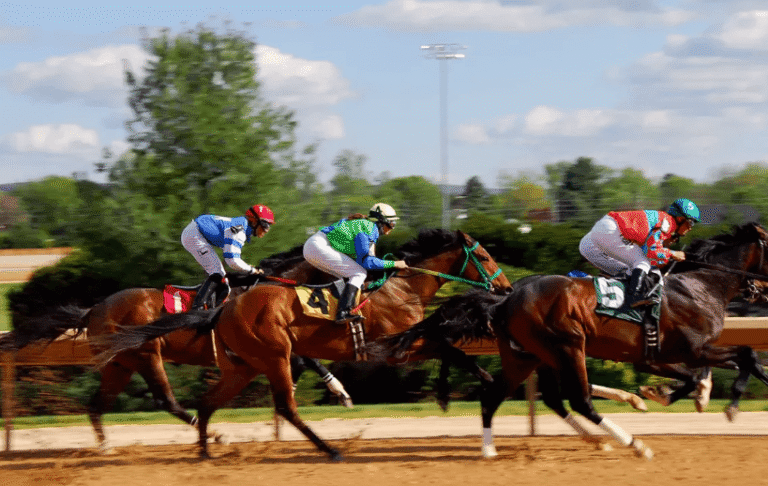Horse racing is a thrilling sport, combining speed, strategy, and excitement. But for many newcomers, understanding the odds at the betting window can feel confusing. What do the numbers mean? How do they translate into winnings? And why do odds change right before the race?
This simple yet detailed guide will explain exactly how horse racing odds work, so whether you’re a casual fan or a beginner bettor, you can enjoy the races with confidence.
1. What Are Horse Racing Odds?
At their core, odds reflect two things:
- The likelihood of a horse winning (based on form, competition, and expert analysis).
- How much money you’ll win if your bet is successful.
In other words, odds are both a probability measure and a payout calculation.
For example:
- A horse with short odds (like 2/1) is considered more likely to win, but the payout is smaller.
- A horse with long odds (like 25/1) is considered less likely to win, but the payout is much larger.
2. Types of Odds Formats
Different countries display odds in different ways. The meaning is the same, but the format changes.
a) Fractional Odds (Common in the UK & Ireland)
Example: 5/1 (five-to-one)
- For every $1 you bet, you win $5 in profit if the horse wins.
- A $10 bet at 5/1 would return $60 ($50 profit + $10 stake).
b) Decimal Odds (Common in Europe, Australia, Canada)
Example: 6.00
- This number includes both your profit and your stake.
- A $10 bet at 6.00 would return $60 total.
c) Moneyline / American Odds (Common in the USA)
- Positive (+250): Bet $100 to win $250.
- Negative (-150): Bet $150 to win $100.
3. Morning Line vs. Final Odds
- Morning Line Odds – The track’s oddsmaker sets these before betting begins, based on the horse’s past performance and competition.
- Final Odds (Tote Odds) – These are determined by how much money is wagered on each horse. They are updated in real time and finalized right before the race starts.
This system is called pari-mutuel wagering: all bets go into a pool, the track takes a small cut, and the remaining pool is divided among winning tickets.
4. Common Bet Types and How Odds Apply
- Win Bet – The horse must finish 1st.
- Place Bet – The horse must finish 1st or 2nd.
- Show Bet – The horse must finish 1st, 2nd, or 3rd.
Exotic Bets (harder to win but higher payouts):
- Exacta – Pick the 1st and 2nd place horses in the correct order.
- Trifecta – Pick the 1st, 2nd, and 3rd in order.
- Superfecta – Pick the 1st four horses in order.
The more complex the bet, the longer the odds and the higher the possible payout.
5. Understanding Favorite, Underdog, and Longshot
- Favorite – The horse with the shortest odds (most money bet on it). Often shown with odds like 2/1 or even odds (1/1).
- Underdog – A horse with less chance of winning, but still competitive. Odds might be 10/1 or 15/1.
- Longshot – A horse with very slim chances of winning, usually 20/1 or higher. If they win, payouts are massive.
Example: A $10 bet on a 50/1 longshot would return $510 ($500 profit + $10 stake).
6. Why Do Odds Change?
Odds are not fixed in pari-mutuel betting. They change as money comes in on different horses.
- If a lot of bettors put money on one horse, its odds shorten.
- If fewer people bet on another horse, its odds drift longer.
This is why you may see a horse at 8/1 in the morning but 5/1 by race time.
7. Calculating Payouts: Step-by-Step Example
Let’s say you bet $20 on a horse at 4/1 odds:
- Multiply $20 × 4 = $80 profit.
- Add your stake back ($20).
- Total return = $100.
If the same horse were at 2.50 decimal odds, the calculation is:
- $20 × 2.50 = $50 return (includes stake).
8. Tips for Reading and Using Odds
- Don’t just follow the favorite – Favorites win only about 30–35% of the time.
- Look for value bets – Sometimes mid-range odds (like 6/1 or 8/1) offer a better balance between risk and payout.
- Track conditions matter – Odds don’t always account for weather or surface changes that could affect performance.
- Set a budget – Odds show potential returns, but betting should always be done responsibly.
Conclusion
Understanding horse racing odds is the key to enjoying the sport beyond the excitement of the track. Odds reflect both probability and payout, helping you decide where to place your bets. From fractional to decimal to American formats, knowing how to read and calculate them allows you to make informed choices.
Whether you’re backing the favorite or taking a chance on a longshot, the odds tell the story of risk versus reward. With this guide, you’ll be ready to approach the betting window—or simply follow the races—with confidence.
